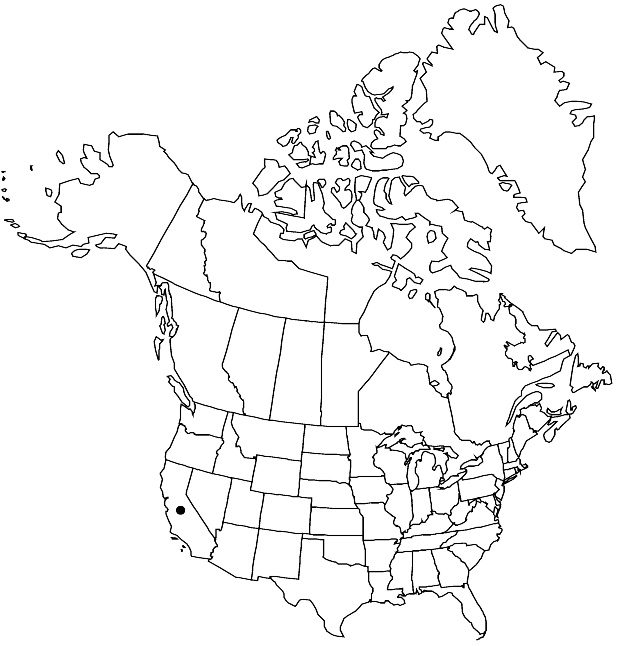Difference between revisions of "Caulanthus hallii"
Ann. Missouri Bot. Gard. 9: 290. 1923.
FNA>Volume Importer |
imported>Volume Importer |
||
| (3 intermediate revisions by 2 users not shown) | |||
| Line 6: | Line 6: | ||
|place=9: 290. 1923 | |place=9: 290. 1923 | ||
|year=1923 | |year=1923 | ||
| + | }} | ||
| + | |special_status={{Treatment/ID/Special_status | ||
| + | |code=E | ||
| + | |label=Endemic | ||
| + | }}{{Treatment/ID/Special_status | ||
| + | |code=C | ||
| + | |label=Conservation concern | ||
}} | }} | ||
|basionyms= | |basionyms= | ||
| Line 11: | Line 18: | ||
|name=Streptanthus hallii | |name=Streptanthus hallii | ||
|authority=(Payson) Jepson | |authority=(Payson) Jepson | ||
| + | |rank=species | ||
}} | }} | ||
|hierarchy=Brassicaceae;Brassicaceae tribe Thelypodieae;Caulanthus;Caulanthus hallii | |hierarchy=Brassicaceae;Brassicaceae tribe Thelypodieae;Caulanthus;Caulanthus hallii | ||
| Line 36: | Line 44: | ||
-->{{#Taxon: | -->{{#Taxon: | ||
name=Caulanthus hallii | name=Caulanthus hallii | ||
| − | |||
|authority=Payson | |authority=Payson | ||
|rank=species | |rank=species | ||
| Line 50: | Line 57: | ||
|publication title=Ann. Missouri Bot. Gard. | |publication title=Ann. Missouri Bot. Gard. | ||
|publication year=1923 | |publication year=1923 | ||
| − | |special status= | + | |special status=Endemic;Conservation concern |
| − | |source xml=https:// | + | |source xml=https://bitbucket.org/aafc-mbb/fna-data-curation/src/2e0870ddd59836b60bcf96646a41e87ea5a5943a/coarse_grained_fna_xml/V7/V7_1171.xml |
|tribe=Brassicaceae tribe Thelypodieae | |tribe=Brassicaceae tribe Thelypodieae | ||
|genus=Caulanthus | |genus=Caulanthus | ||
Latest revision as of 22:30, 5 November 2020
Annuals; sparsely to densely hispid or subglabrate. Stems erect or ascending, unbranched or branched distally, (hollow, sometimes slightly inflated), 2–12 dm. Basal leaves rosulate; petiole 0.5–3.5 cm; blade oblanceolate to oblong (in outline), 1.5–11.5 cm × 5–55 mm, margins pinnately lobed (lobes dentate). Cauline leaves (distalmost) sessile; blade lanceolate-linear, margins entire, (surfaces sparsely hispid). Racemes (somewhat lax), without a terminal cluster of sterile flowers. Fruiting pedicels ascending, 9–25 mm, hispid or subglabrate. Flowers: sepals erect, (creamy white), lanceolate to ovate, 3–6.5 × 1.8–2.5 mm (equal); petals creamy white, 6–10.5 mm, blade 3–4 × 1.5–2 mm, not crisped, claw narrowly oblanceolate or oblong, 3–6 × 2–3 mm; filaments in 3 unequal pairs, abaxial pair 2.5–6 mm, lateral pair 1.5–4.5, adaxial pair 4.5–8 mm; anthers narrowly oblong, unequal, 2–3 mm (adaxial pair slightly smaller). Fruits divaricate to ascending (sometimes curved), terete, 6.5–12.5 cm × 1.8–2.2 mm; valves each with prominent midvein; ovules 78–96per ovary; style to 2 mm; stigma slightly 2-lobed. Seeds 1–1.6 × 0.7–1 mm.
Phenology: Flowering Mar–May.
Habitat: Rocky areas, chaparral, scrub
Elevation: 150-1800 m
Discussion
Of conservation concern.
Caulanthus hallii is known from Riverside and San Diego counties.
Selected References
None.
